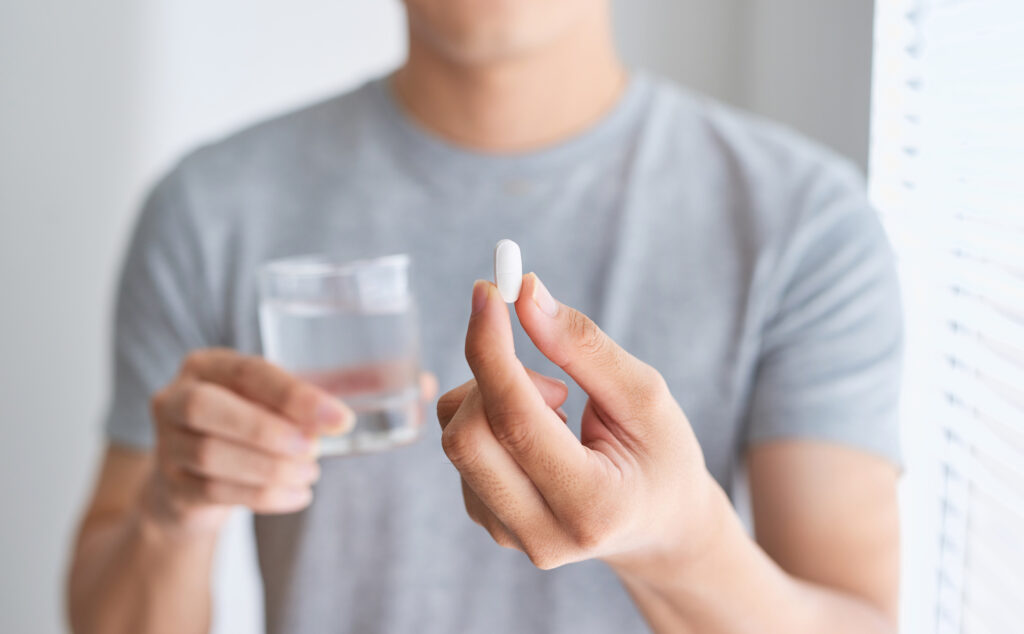Prescription drugs, such as opioid pain relievers, stimulants, anxiolytics, and sedatives, carry a risk for problematic substance use. While these substances are legally prescribed for therapeutic purposes, the potential for them to be misused is significant.
When we talk about problematic substance use and addiction, it’s important to note that controlled and illegal drugs (also known as street drugs) are only one subset of the psychoactive substances that can negatively impact people’s lives.
According to the most recent Canadian Alcohol and Drugs Survey (CADS), 7% of Canadians who reported having used psychoactive pharmaceuticals in the past year also reported using prescription drugs to “get high”, or, at the very least, used them inconsistently with their prescribed dosage or accompanying instructions.
In this article, we will explore the risks and harms associated with prescription drug misuse and the factors involved with how someone may develop an addiction to prescription drugs.
How Does an Addiction to Prescription Drugs Develop?
There are many ways that an addiction to prescription drugs can develop.
Tolerance: First, it’s worth noting that an addiction to a prescription drug can develop in cases where people take medication exactly as prescribed. A medication’s effectiveness in treating symptoms such as pain, combined with a diminished response to a drug over time (i.e. tolerance) can make it challenging to stop using these substances.
Dosage: Addiction can also develop in cases where medications are used in higher doses or more frequently than prescribed, whether for greater therapeutic effects or for experimental/recreational use.
Access: Using a prescription medicine that is prescribed for someone else (a friend or family member) also poses a risk of developing an addiction. These prescriptions are based on someone else’s health history and current condition, and this may present a higher risk of addiction than anticipated.

Things to Keep in Mind
It’s important to note that individuals with genetic predispositions toward addiction and low mental health are at a greater risk for developing an addiction. We believe struggles with an addiction are within the person, not the drug.
It’s also worth adding that physical dependence is not the same as addiction. For those in chronic pain, only about 1-2% actually develop an addiction because they are prescribed narcotics. The key criterion used to diagnose addiction is the person continues to use the substance, even though they know it causes them a cycle of chronic suffering.
Addiction is not just a physical phenomenon, but rather a combination of components which are physical, psychological, social, and spiritual.
The Danger of Prescription Drug Misuse
Prescription drug misuse and addiction can lead to a variety of negative health consequences, including changes in brain chemistry, overdose, and death, as well as other physical, psychological and social harms. These risks are exacerbated when prescription drugs are combined with other substances, such as alcohol or street drugs.
In some cases, prescription drug use can be a gateway into the problematic use of street drugs. Opiates are a classic example of this, with people turning to street drugs to fill their needs when their prescription comes to an end or isn’t having the effect it used to.

Protect Yourself from Prescription Drug Misuse
From a healthcare perspective, there’s a lot that can be done to tackle prescription drug misuse. Educating patients, healthcare providers, and the general public about the risks surrounding prescription drugs is key. Encouraging and supporting the use of non-opioid pain management options for those with known predispositions can also help reduce the risk of opioid abuse. Self-advocacy is key, especially within the existence of ethical issues regarding problematic doctors and prescriptions – which is an entire issue of its own for another day.
There are always ways to reduce risk at an individual level. Safe storage and disposal, for example, are important to making sure prescription drugs don’t end up in hands not intended for.
Individuals should always stick to instructions on their prescription, including dose, frequency, route of administration, and any warnings/contraindications. As with any type of addiction, identifying and intervening early with individuals who are at risk of or showing signs of prescription drug abuse can help prevent it from becoming a chronic problem.
Sunshine Coast Health Centre and Georgia Strait Women’s Clinic are world-class centers for addiction treatment and mental health. Our approach recognizes the importance of the physical, psychological, social and spiritual aspects of individuals in treatment and recovery. If you or someone you know is struggling with substance use or mental health, give us a call today.



